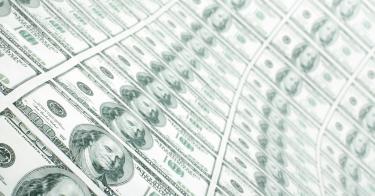Imagine an arsonist blaming you for the blaze he started at your house. Sound far-fetched? Well, that’s essentially what happened recently when a member of the Federal Reserve blamed workers’ pay increases for causing inflation.
The Fed has the correlation correct but not the causation. It’s true that wages tend to rise quickly in periods of high inflation, but it’s not the wage increases that ignite the fire. Rather, the central bank’s money creation causes prices everywhere to rise, including the price of labor—i.e., wages.
When the amount of money increases relative to the goods and services being produced in an economy, the currency becomes devalued. The ability of money to accurately measure value becomes impaired as the measuring stick shrinks, sending the economy into convulsions from distorted price levels.
If inflation is so disruptive, why does the Fed engage in these money-creation binges in the first place? It creates the money because the federal government wants to spend it, and raising taxes explicitly would be politically unpalatable.
>>> The Fed’s Scheme To Crush Inflation Is Running on Borrowed Time
But running the money printing press in high gear has an insidious effect: A portion of every existing dollar is effectively confiscated by the Fed and transfused into the newly created currency, which the federal government can now spend freely.
This is how the Fed transfers wealth from the people to the bureaucrats.
But after giving this new money to the government, there is too much money in circulation, and inflation rages. To put out the inflation fire, the amount of money must be reduced to restore the ratio between currency and what that currency can buy.
But the Fed doesn’t want to take money away from the government since that would merely undo its hard work in transferring wealth from the people to its bureaucratic wardens. Instead, the Fed looks to the people for its pound of flesh.
As the Fed contracts the money supply, borrowing costs increase, and economic activity slows. Consumers lose access to cheap credit and must scale back their purchases. Businesses see sales decline. Many people are thrown out of work as the economy goes from expansion to recession.
The Fed has long operated under Keynesian theories that imply that the Fed must crush private sector demand to tame inflation, but now it has gotten so bold as to say the quiet part out loud.
In addition to the stated goal of “softening” the labor market (a euphemism for creating unemployment and stopping nominal wage growth), the Fed is now asking for employers’ help to end pay increases. The veil has been lifted, and the public can see what the Fed seeks to achieve: Crush the private sector to support a burgeoning federal government.
Immorality aside, these theories demonstrate a deeply rooted misunderstanding of monetary theory. First, paying employees less will not reduce the amount of money in circulation. It just leaves more money in the hands of business owners and less for employees; businesses will still spend that money in other ways, such as advertising or building inventory.
>>> Don’t Give an Inch on the Debt Ceiling
Second, as President Ronald Reagan said, inflation is not caused by the people living too well but by the government living too well. The way to fight inflation is to shrink the size of government so that the Fed need not feed the beast with ever-growing supplies of cash and then let interest rates find their own natural level.
Inflation is fundamentally a hidden tax, but a tax nonetheless. The Fed’s behavior over the last two years demonstrates how it has become the mechanism by which the government impoverishes the people to enrich itself. Through the hidden tax of inflation, wealth is stealthily and subtly transferred, subjecting those across the land to pay tribute to Washington. The American people then become collateral damage in the Fed’s fight against the very inflation it created.
Mentions of financial imprisonment via monetary abuses may sound hyperbolic, but consider that the Fed, since its creation, has confiscated 97% of the dollar’s value, transferring that wealth from the people to the government. A wealth transfer approaching 100% certainly sounds like financial fetters.
If you walk by the Eccles building on Constitution Avenue in Washington, which houses the Fed, you may notice a stark resemblance to a prison—yet it might be the only one in the world that imprisons those on the outside.
This piece originally appeared in The Washington Times




